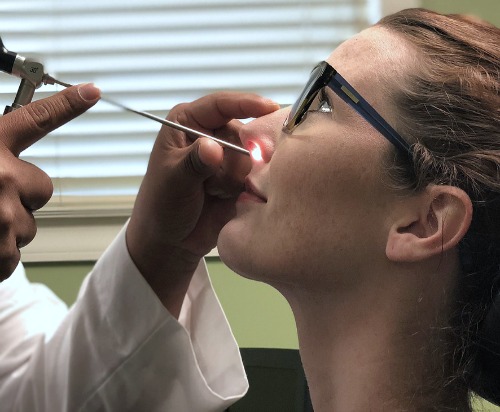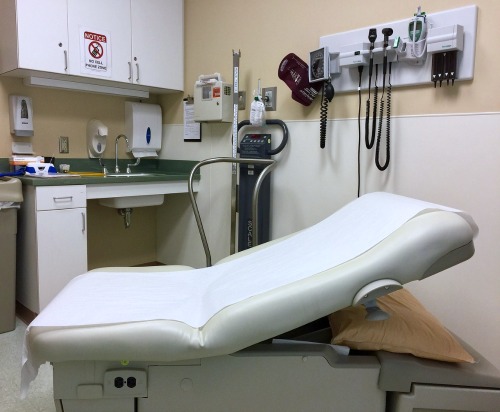How to Maintain the Results of a Sinus Treatment
Sinus problems affect an estimated 15 percent of individuals nationwide, making this one of the most chronic health issues in the country today.
Patient-reported health impacts of chronic sinusitis include missed work days, decreased productivity, sleep disruption, depression and trouble with intimacy, as well as overall decreased quality of life.
For these and other reasons, it simply makes sense that sinus treatments are on the rise today. A number of effective sinus treatments are available to improve sinus function, boost immune system function and improve daily functioning and wellness.
One of the most critical phases of sinus treatment is during the post-treatment recovery period. It is important to know what to do to get the most out of your sinus treatment and maintain the beneficial results.
Options for Sinus Treatment
With ongoing advances in the field of Ear, Nose & Throat (ENT) health, you have more options for sinus treatment than at any other time in history.
Treating ENT issues typically begins with a conservative approach using medications and irrigation. If these treatments do not bring the necessary cessation of symptoms, it is time to move on to more advanced protocols.
Balloon sinuplasty is typically done as a simple, quick outpatient procedure. A balloon catheter is inserted into the sinus passages to drain blocked sinuses and gently remodel the interior to facilitate drainage. The procedure can be done under local anesthetic with minimal recovery time.
Turbinate surgery is performed when there is obstruction or blockage in the turbinate area of the sinuses – a bony structure covered in mucosal lining. Turbinate surgery aims to open up partially obstructed or blocked areas along the sinus passageways, ease swelling and promote healing and proper function post-surgery.
Septoplasty is performed when the patient is experiencing a nasal obstruction or blockage due to genetic anatomical (deviated septum), polyps, trauma or chronic allergy reasons. A septoplasty corrects any anatomical or trauma-related abnormalities, relieves swelling and supports proper nasal function post-surgery.
Functional endoscopic sinus surgery is yet another option to relieve persistent sinus symptoms related to sinusitis. Endoscopic surgery uses a very small endoscope (camera) to guide the surgeon in removing obstructive tissue or bone, restructure the sinus cavity and passageways optimally and facilitate proper function post-surgery.
Post-Surgical Recovery Procedures to Optimize Results
Samuel Becker, sinus expert from New Jersey, writes that one of the most important phases of sinus surgery comes during the post-surgical recovery time.
While it can be tempting to rush through this healing phase and get back to regularly scheduled life, failure to adhere to the precise recovery protocol can invite infection and complications, delay healing and reduce efficacy of the procedure.
The type of surgery prescribed can in part dictate the length of recovery downtime as well as the specific care needed to facilitate optimal healing.
Recovery from a balloon sinuplasty is typically quick, requiring just one to two days of reduced activity. Since advances have now rendered nasal packing and stitches obsolete, the most you might experience is a bit of swelling or headaches along with minor nasal bleeding.
Turbinate surgery is typically slightly more involved than a balloon sinuplasty. Some procedures require general anesthesia while others can be done with local anesthetic.
Local procedures typically require up to two days of recovery downtime. General procedures may require three to four days of recovery time, including taking time away from work to ensure the best treatment results.
A septoplasty is typically performed under general anesthesia, although some procedures can be done with local anesthesia only. While some patients who undergo local-only procedures may be able to resume basic daily activities after a few days rest time, the majority of patients will need to schedule a week or more away from work and limit activities until the surgical site has healed fully.
In the majority of cases, functional endoscopic sinus surgery is performed with the patient under general anesthesia. While the procedure itself is designated as minimally invasive due to the use of endoscopes, there may be sutures or stitches. In most cases, these are dissolvable sutures that do not require manual removal. Stitches are not always needed depending on the location of the surgery.
Patients are advised to take at least one to two weeks away from heavy lifting or vigorous exercise. Taking a few days away from work is also advisable to give the body time to reduce swelling and begin to heal.
General Recommendations to Maintain Results of Sinus Treatment
Most sinus patients report effective pain relief using over-the-counter remedies such as Tylenol.
You will be given comprehensive post-surgical instructions for care of the surgical site and specific suggested remedies to ease temporary discomfort from swelling, discharge or mild bleeding.
Even if you are feeling like your recovery is advancing rapidly and you are wanting to get back to your regular fitness and activity schedule, it is wise to err on the side of caution and take a conservative approach for at least a few weeks for optimal healing.
About Becker Ear, Nose & Throat Center
Dr. Samuel S. Becker, M.D., and Dr. Daniel E. Becker, M.D., are the co-founders and medical directors for Becker Ear, Nose & Throat Center. Drs. Becker and Becker lead a team of highly trained and credentialed, board-certified physicians.
Together, the medical team has published more than 100 scientific papers, textbooks, book chapters and articles in the field of otolaryngology and facial plastic and reconstructive surgery. The team holds several patents for new technology and several team members sit on editorial boards for some of the most respected journals in the field.
The Center maintains several locations throughout New Jersey and Pennsylvania for the convenience of patients. To learn more and schedule your initial consultation, visit our site today.

